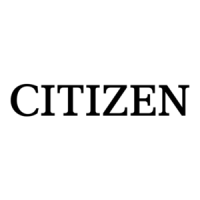Support
model
- 113 -
GS v 0 m xL xH yL yH d1 ... dk
[Function] Printing of raster bit image
[Code] <1D>H<76>H<30>H<m><xL><xH><yL><yH> [<d>] k
[Range] 0≤m≤3, 48≤m≤51, 0≤xL≤255, 0≤xH≤255,
0≤yL≤255, 0≤yH≤8, 0≤d≤255,
k=(xL+xH×256)×(yL+yH×256), however, k≠0
[Outline] [The specification which is common to the model]
• Prints raster bit images in mode “m”.
m
Mode Name
Dot Density in
Vertical Direction
Dot Density in
Horizontal Direction
• xL, xH specify the number of data in horizontal direction of the bit image to (xL+xH×256) bytes.
• yL, yH specify the number of data in vertical direction of the bit image to (yL+yH×256) bytes.
[Caution] [The specification which is common to the model]
• Any of the print modes (character size, emphasis, double strike, inverting, underlining, back-to-white reversing,
etc.) does not affect the raster bit image.
• If the print area specified by GS L and GS W is narrower than a minimum width, the print area for that line
only is extended to the minimum width. The minimum width is one dot in NORMAL MODE (m=0, 48) and
DOUBLE HEIGHT MODE (m=2, 50), and 2 dots in DOUBLE WIDTH MODE (m=1, 49) and
QUADRUPLE SIZE MODE(m=3, 51).
• Any part of data that is out of the print area is only read and discarded in units of dot.
• The print start position can arbitrarily be specified with HT (horizontal tab), ESC $ (specifying absolute position),
ESC
\
(specifying relative positions), and GS L (setting left margins). Note that if the print start position is not a
multiple of 8, the printing speed may decrease.
• The setting of ESC a (aligning characters) are also valid for the raster bit image.
• If this command is executed during macro definition, the macro definition is suspended, and the processing of
the command starts. The macro is left undefined.
• “d” denotes defined data. Dots to be printed are specified as “1”, and those not to be printed as “0”.
• Valid only when no print data is present in the print buffer at the selection of STANDARD
MODE.

